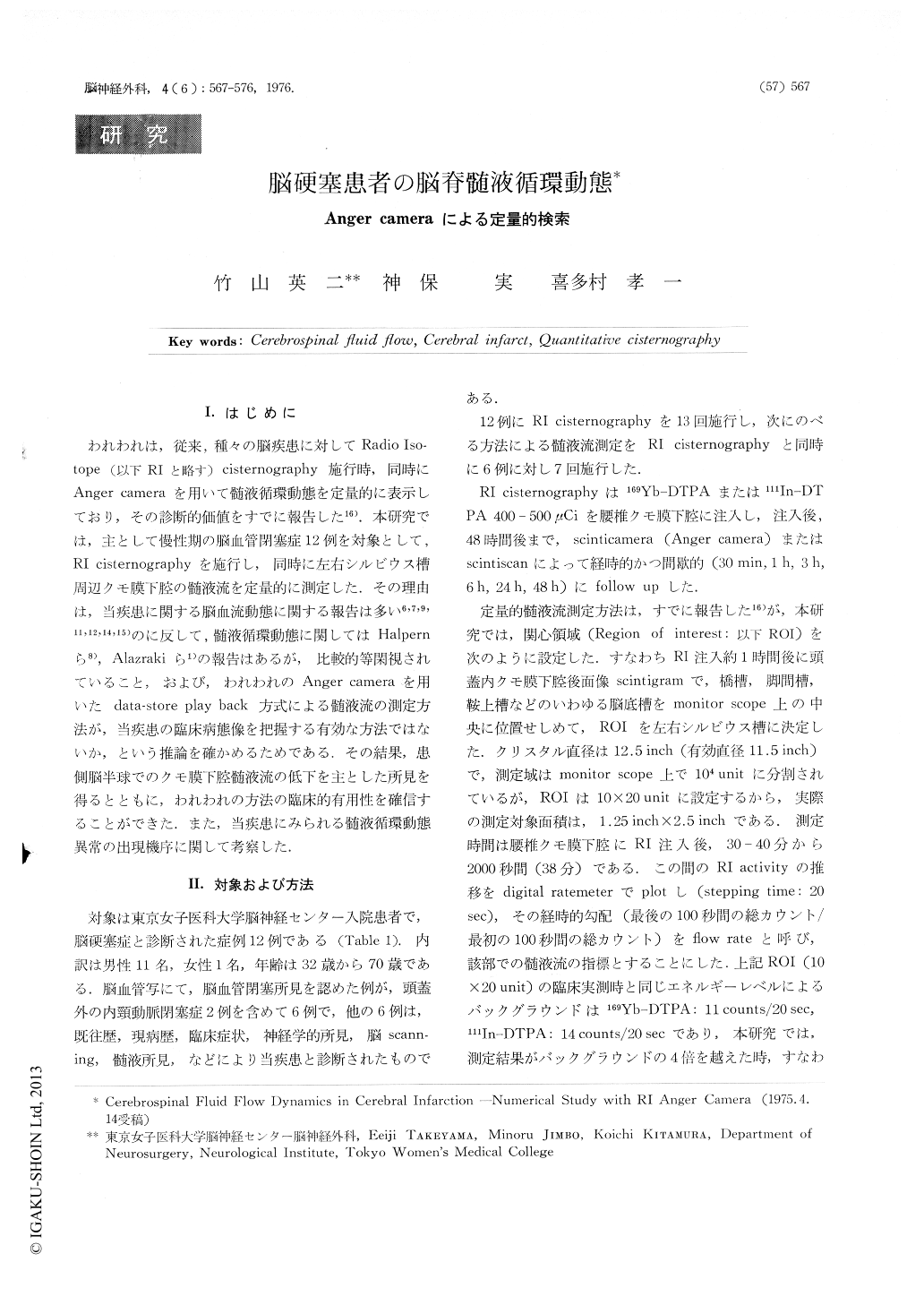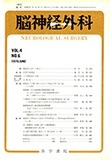Japanese
English
- 有料閲覧
- Abstract 文献概要
- 1ページ目 Look Inside
Ⅰ.はじめに
われわれは,従来,種々の脳疾患に対してRadio Isotope(以下RIと略す)cisternography施行時,同時にAnger cameraを用いて髄液循環動態を定量的に表示しており,その診断的価値をすでに報告した16).本研究では,主として慢性期の脳血管閉塞症12例を対象として,RI cisternographyを施行し,同時に左右シルビウス槽周辺クモ膜下腔の髄液流を定量的に測定した.その理由は,当疾患に関する脳血流動態に関する報告は多い6,7,9,11,12,14,15)のに反して,髄液循環動態に関してはHalpernら8),Alazrakiら1)の報告はあるが,比較的等閑視されていること,および,われわれのAnger cameraを用いたdata-store play back方式による髄液流の測定方法が,当疾患の臨床病態像を把握する有効な方法ではないか,という推論を確かめるためである.その結果,患側脳半球でのクモ膜下腔髄液流の低下を主とした所見を得るとともに,われわれの方法の臨床的有用性を確信することができた.また,当疾患にみられる髄液循環動態異常の出現機序に関して考察した.
Although the cerebral blood flow dynamics in cerebral infarction has already been studied by many investigators, the CSF flow dynamics in cerebral infarction has not been well discussed. The purpose of this paper is to investigate CSF flow dynamics in chronic cerebral infarction by RI cisternography and our new quantitative method.
In 12 patients with cerebral infarction, the flow of CSF was estimated following intrathecal injection of 169Yb-DTPA or 111In-DTPA.

Copyright © 1976, Igaku-Shoin Ltd. All rights reserved.


